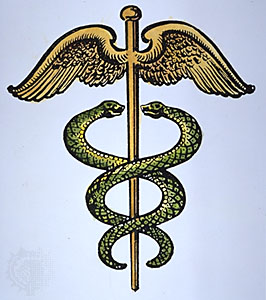 The anonymous Editor of Blawg Review has opened nominations for Best Blawg Review of the Year. The nominating is open, according to his rules, only to those that have hosted one of the past 140 Blawg Reviews or those that have already signed up for a future one. (Edit: Nominations are now open until Jan. 14th, due to the holiday.)
The anonymous Editor of Blawg Review has opened nominations for Best Blawg Review of the Year. The nominating is open, according to his rules, only to those that have hosted one of the past 140 Blawg Reviews or those that have already signed up for a future one. (Edit: Nominations are now open until Jan. 14th, due to the holiday.)
The editor is looking for a peer-reviewed award (or as close as the legal blogosphere can approximate), as opposed to a popularity contest.
Since he points out, quite rightly, that such “best of” awards are so highly subjective, I’m going to participate and nominate by listing those reviews that inspired me when I wrote my marathon themed Blawg Review #134 this year. The editor’s recommendations of some of the presentations that might be considered for nomination, which include mine, are up at Virtually Blind.
In listing these reviews, I tip my hat to each as I borrowed ideas and concepts from each writer and stood on their shoulders to create my own:
#89, The Mummers Veil by the anonymous Editor himself, inspired me to indulge in fantasy visits with different bloggers. A rigid regard for the truth, I understood, was not necessary to presenting the best posts of the week. The point was to simply point to good law blog posts, making it available in a fun, creative way. Doing so in the context of a story often makes it more interesting (if you can pull it off without being “annoying, strained and distracting” as David Giacalone once wrote).
#101, from Diana Skaggs at The Divorce Law Journal, based on the Kentucky Derby. Since I had decided one month earlier to host a November review based on the NYC Marathon, a review based on the Kentucky Derby certainly caught my interest. She galloped through the legal blogosphere in winning fashion in a creative review that clearly was long in the making. I loved watching her mid-stride integration of law and racing.
#106 from Brett Trout at IT Blawg was based on a motorcycle race track. With another racing review, I took mental notes on how different parts of a race course, or different concepts, might be used to help introduce different legal topics in a very non-traditional manner.
#127, from Anne Reed’s Deliberations, was based on jury selection. As a trial lawyer that obviously appeals to me, and I watched as she took 17 different selection tips and matched them to posts. In her review however, she didn’t just link but went into the personalities of the posters to match them up with different concepts.
#137, by Colin Samuels at Infamy or Praise, was based on the third part of Dante’s Divine Comedy, Paradise. While #137 came after my own, the Inferno themed #35 and the Purgatory themed #86 came before. In these, Dante travels with his guides, the poet Virgil and later Beatrice. This inspired me to add a guide of my own — Marty, an alter ego or one-man Greek chorus — who ran the race with me and would drop in from time to time to comment. While I couldn’t pull off the wonderful literacy of Colin’s pieces, his posts were there to remind me that the bounds of a review are limited only by the creativity of the mind.
Two final notes on the Blawg Reviews:
First, while the editor has an interesting idea with the nominating process, the reality is that many folks are out of town for the long holiday weekend. I’m guessing the nominating will therefore be very light. Having a yearly award in April would have a much better response rate. Yeah, yeah, I know. (Edit: Nominations are now open until Jan. 14th, due to the holiday.)
Second, it seems that the vast majority of reviews are written by practicing attorneys. Professors are notably absent. (In fact, professors rarely even acknowledge their existence, an exception being Prof. Dan Solove and his band of merry Concurring Opinionators for #75.) I haven’t figured out why yet, since the primary purpose is to simply round up interesting blog postings, and their own postings are often included. Is there a reason professors are less likely to let their hair down and go outside their usual comfort zones?
Links to this post:
An Honor To Be Nominated
Blawg Review was honored to be nominated by the ABA Journal editors as one of the Blawg 100, where our humble Blawg Review blog was unfortunately categorized under the heading “Generally Speaking” along with many of the most popular law …
posted by Editor @ January 04, 2008 2:29 PMnot another blawg award
with the success of the simply the best blawg meme and the recent announcement of dennis kennedy’s blawggies, following the aba journal’s blawg 100, it seems the last thing the blawgosphere needs is yet another list of who’s the best …posted by Editor @ December 28, 2007 2:55 AM



